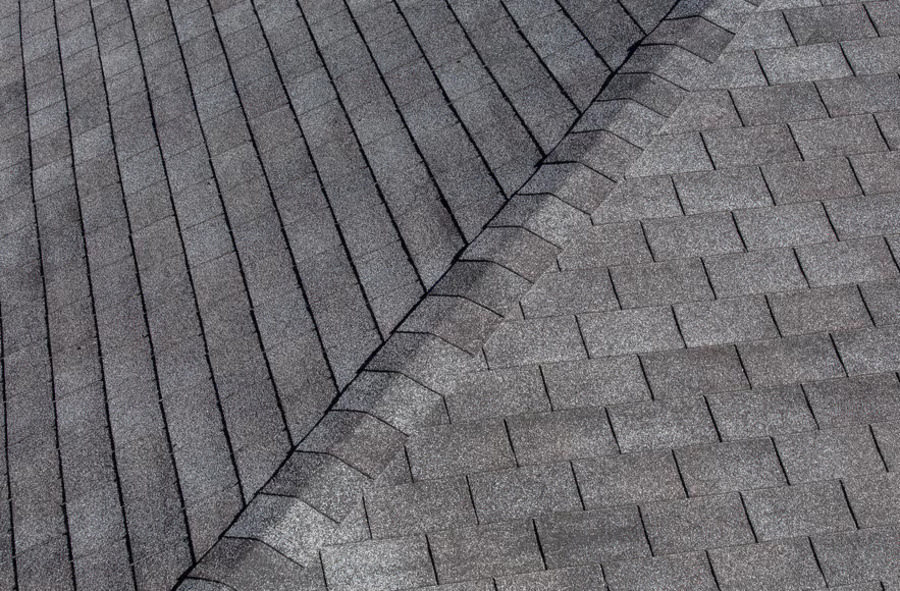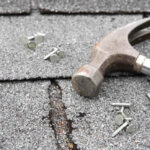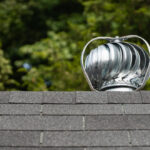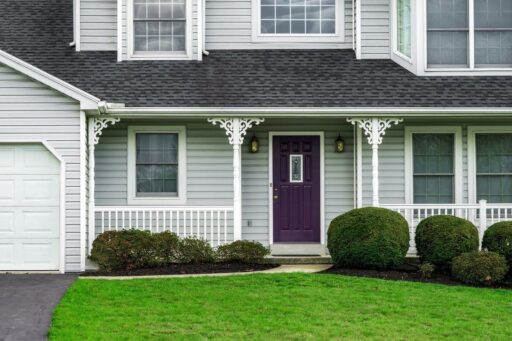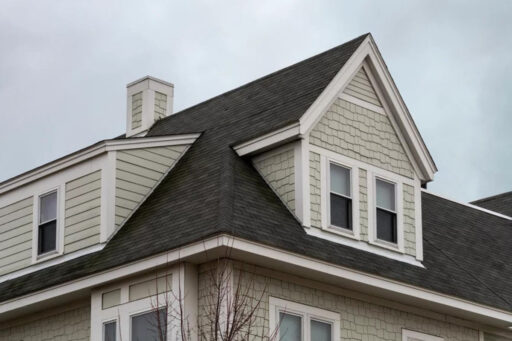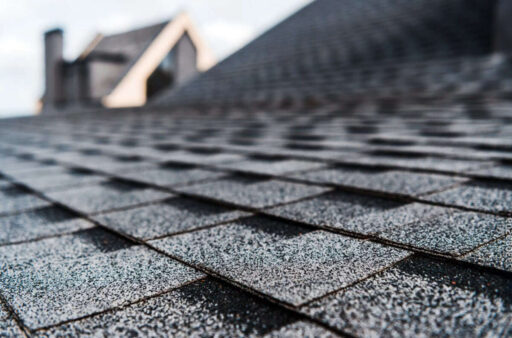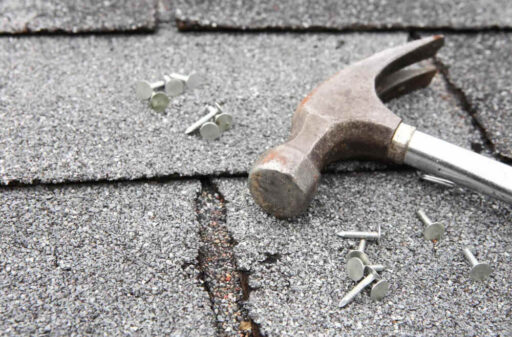When it comes to protecting your home from the elements, the choice of roofing material plays a crucial role. Among the myriad options available, fiberglass vs asphalt roof shingles stand out as popular choices for residential roofing. Both materials offer unique advantages and have their own set of characteristics that can influence your decision. As a homeowner, you’re faced with the important task of selecting the right roofing material that not only safeguards your property but also enhances its aesthetic appeal. The debate between fiberglass and asphalt shingles has been ongoing, with each material boasting its own loyal following.
The Composition of Fiberglass Shingles
Fiberglass shingles, as the name suggests, have a core made of fiberglass mat. This mat is created by weaving fine glass fibers into a sheet, which is then coated with asphalt. The asphalt makes the shingles waterproof, while ceramic granules are embedded on top to add color and protect the shingles from UV radiation.
The manufacturing process of fiberglass shingles involves several layers:
- Fiberglass mat core
- Asphalt coating
- Ceramic granules
- Weather-resistant sealant
This layered structure gives fiberglass shingles their strength and durability. The fiberglass core provides stability and fire resistance, while the asphalt coating and ceramic granules work together to protect against water infiltration and sun damage.
One of the key advantages of fiberglass shingles is their lightweight nature. This characteristic not only makes them easier to install but also puts less stress on your roof’s structural components. Additionally, the inorganic composition of fiberglass makes these shingles more resistant to fire compared to their organic counterparts.
Understanding Asphalt Shingles: Organic vs. Fiberglass-Based
Asphalt shingles come in two main varieties: organic and fiberglass-based. While both types are referred to as “asphalt shingles,” their composition and performance characteristics differ significantly.
Organic Asphalt Shingles:
- Base layer: Made from recycled felt paper or wood fibers
- Saturated with asphalt for waterproofing
- Coated with adhesive asphalt
- Topped with ceramic granules for protection
Fiberglass-Based Asphalt Shingles:
- Base layer: Fiberglass mat
- Coated with asphalt for waterproofing
- Topped with ceramic granules
Organic asphalt shingles were once the standard, but they’ve largely been phased out in favor of fiberglass-based options. The organic variety tends to be more flexible and easier to install in cold weather, but they’re also heavier and less resistant to fire.
Fiberglass-based asphalt shingles, on the other hand, offer improved fire resistance and a lighter weight. They’ve become the more popular choice due to their durability and cost-effectiveness. When comparing fiberglass vs asphalt roof shingles, it’s important to note that modern “asphalt” shingles often refer to the fiberglass-based variety.
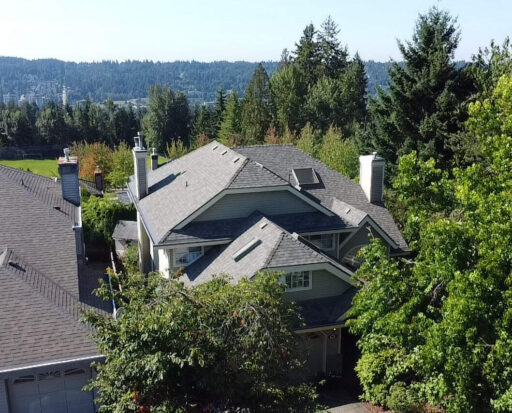
Durability Face-Off: Fiberglass vs. Asphalt Shingles
When it comes to longevity and resilience, both fiberglass and asphalt shingles have their strengths. Fiberglass shingles typically offer superior durability due to their inorganic composition. They’re less prone to warping, curling, or tearing, which can extend their lifespan significantly. Asphalt shingles, particularly the organic variety, may be more susceptible to damage over time. However, high-quality fiberglass-based asphalt shingles can rival the durability of pure fiberglass options. Here’s a comparison of durability factors:
| Factor | Fiberglass Shingles | Asphalt Shingles |
| Lifespan | 25-30 years | 15-30 years |
| Fire Resistance | Excellent | Good to Excellent |
| Wind Resistance | Very Good | Good |
| Impact Resistance | Good | Varies by product |
It’s worth noting that the durability of any roofing material also depends on factors such as proper installation, regular maintenance, and local climate conditions. While fiberglass shingles may have a slight edge in overall durability, high-quality asphalt shingles can perform admirably when well-maintained.
Weather Resistance: How Each Material Performs
Your roof is your home’s first line of defence against the elements, making weather resistance a critical factor in choosing between fiberglass and asphalt shingles. Both materials offer good protection, but they perform differently under various weather conditions.
Fiberglass Shingles:
- Excellent resistance to UV rays due to ceramic granules
- Superior fire resistance
- Good wind resistance, especially with proper installation
- Less prone to thermal cracking in extreme temperature changes
Asphalt Shingles:
- Good overall weather resistance
- May be more susceptible to wind damage
- Can soften in extreme heat, potentially leading to granule loss
- Organic varieties may absorb moisture, leading to warping or rot
In areas with frequent hailstorms, impact-resistant versions of both fiberglass and asphalt shingles are available. These specialized products can provide enhanced protection against hail damage and may even qualify you for insurance discounts in some regions.
Ultimately, while both materials offer good weather resistance, fiberglass shingles tend to have a slight advantage in extreme conditions. However, advancements in asphalt shingle technology have narrowed this gap, making high-quality asphalt options a viable choice for many climates.
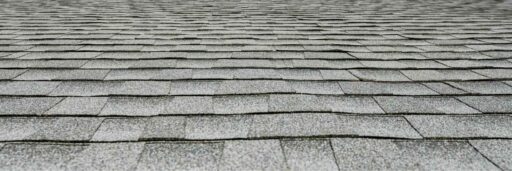
Cost Comparison: Initial Investment and Long-Term Value
When evaluating fiberglass vs asphalt roof shingles, cost is often a decisive factor for many homeowners. It’s important to consider both the initial investment and the long-term value each option provides.
Initial Costs:
- Asphalt shingles are generally less expensive upfront
- Fiberglass shingles may have a higher initial cost but often last longer
Long-Term Value:
- Fiberglass shingles typically have a longer lifespan, potentially reducing replacement frequency
- Asphalt shingles may require more frequent repairs or earlier replacement
To illustrate the cost differences, consider this example:
| Aspect | Fiberglass Shingles | Asphalt Shingles |
| Initial Cost (per sq ft) | $3.50 – $5.50 | $2.50 – $4.00 |
| Installation Cost (per sq ft) | $2.00 – $3.50 | $2.00 – $3.00 |
| Lifespan | 25-30 years | 15-30 years |
| Maintenance Costs | Lower | Moderate |
While asphalt shingles may seem more budget-friendly initially, the extended lifespan and lower maintenance costs of fiberglass shingles could provide better value over time. However, if you’re working with a tight budget or plan to sell your home in the near future, asphalt shingles might be the more practical choice.
Remember to factor in potential energy savings, insurance premiums, and local climate considerations when calculating the true cost of your roofing investment.
Installation Process: Ease and Requirements
The installation process for both fiberglass and asphalt shingles is relatively similar, but there are some key differences to consider. Understanding these nuances can help you appreciate the work involved and make an informed decision about which material might be best for your home.
Fiberglass Shingles Installation:
- Lighter weight makes them easier to handle and transport
- Less prone to breakage during installation
- May require special techniques in cold weather due to reduced flexibility
- Often come with more stringent warranty requirements for installation
Asphalt Shingles Installation:
- Heavier, which can make handling more challenging
- More flexible, allowing for easier installation in various weather conditions
- Organic varieties may be preferred for cold weather installations
- Generally more forgiving of minor installation errors
While many homeowners consider roofing a DIY project, professional installation is often recommended to ensure proper technique and maintain warranty coverage. The complexity of the roof, local building codes, and your personal experience should all factor into this decision.
Energy Efficiency: Which Shingle Type Keeps Your Home Cooler?
In an era of rising energy costs and increased environmental awareness, the energy efficiency of your roofing material can have a significant impact on your home’s overall performance. Both fiberglass and asphalt shingles can be manufactured with energy-efficient properties, but there are some differences to consider.
Fiberglass Shingles:
- Generally lighter in color, reflecting more sunlight
- Better heat resistance due to inorganic composition
- Can be manufactured with special reflective granules for enhanced cooling properties
Asphalt Shingles:
- Traditionally darker, absorbing more heat
- Now available in “cool roof” varieties with reflective granules
- Organic varieties may provide slightly better insulation
It’s worth noting that while cool roof technologies can significantly reduce heat absorption, the overall energy efficiency of your home depends on various factors, including insulation, ventilation, and local climate conditions.
Summary
Choosing between fiberglass vs asphalt roof shingles is a decision that requires careful consideration of various factors. Both materials offer distinct advantages and can provide reliable protection for your home when properly installed and maintained. Fiberglass shingles stand out for their durability, fire resistance, and potential for longer lifespans. They may be particularly well-suited for hot climates or areas with extreme weather conditions. However, they often come with a higher initial cost. Asphalt shingles, particularly the fiberglass-based varieties, offer a good balance of performance and affordability. They provide a wide range of aesthetic options and can be a cost-effective choice for many homeowners. However, they may have shorter lifespans and could require more frequent maintenance.

